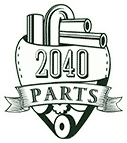Other Merchandise for Sale
 Toyota camry hybrid (201108-) rear camera genuine oem(US $499.99)
Toyota camry hybrid (201108-) rear camera genuine oem(US $499.99) Chrysler grey imported from detroit casual x-large cap mopar(US $32.97)
Chrysler grey imported from detroit casual x-large cap mopar(US $32.97) Clevite 77 mpg-1 plastigage fits:universal 0 - 0 non application specific(US $17.95)
Clevite 77 mpg-1 plastigage fits:universal 0 - 0 non application specific(US $17.95) Saturn car company metal cow bell automobile advertising(US $7.50)
Saturn car company metal cow bell automobile advertising(US $7.50) Corvette 2005 book + dvd + 2004 naias brochure + chart - ls2 chevrolet: 6.0l 364
Corvette 2005 book + dvd + 2004 naias brochure + chart - ls2 chevrolet: 6.0l 364 Corvette 2004 - book brochure + dvd - chevrolet 04 commemorative - z51 ls1 coupe
Corvette 2004 - book brochure + dvd - chevrolet 04 commemorative - z51 ls1 coupe
McLaren P13 – first OFFICIAL details and image
Wed, 11 Dec 2013McLaren P13 (pictured) first OFFICIAL details revealed It was only last month that we had official confirmation that the McLaren P13 – McLaren’s more affordable mid-engined supercar – would arrive in 2015 to take on cars like Audi’s R8 and the top end Porsche 911s. Now McLaren has gone a bit further and revealed details of the P13. The McLaren P13 – shown above in a sketch by McLaren’s design boss, Frank Stephenson – looks to take its design cues more from the MacLaren P1 than the 12C – a good thing – and will utilise the same carbon fibre MonoCell chassis as the P1 and 12C as well as a de-tuned version of the same 3.8 litre V8 turbo.
Porsche plans to shift U.S. headquarters to Atlanta airport site
Wed, 11 May 2011Porsche is reportedly set to move its North American headquarters from a suburb north of Atlanta to the site of a demolished Ford Motor Co. assembly plant that once built the Ford Taurus and the Mercury Sable next to the Atlanta airport. A formal announcement is expected on Thursday, according to a report in the Atlanta Journal-Constitution.
Toyota tests chips that improve hybrid efficiency by 10 percent
Tue, 20 May 2014Toyota announced on Tuesday that it has developed a new semiconductor, claiming it can boost fuel efficiency in hybrid cars by an impressive 10 percent. The semiconductors manage the flow of electricity through the power-control unit that connects the battery to an electric or hybrid car's motor and generator. The newly developed semiconductors are said to consume only a tenth of the energy of today's chips, while allowing the power-control unit to be 80 percent smaller.

